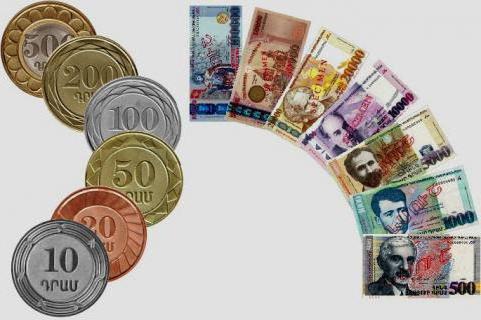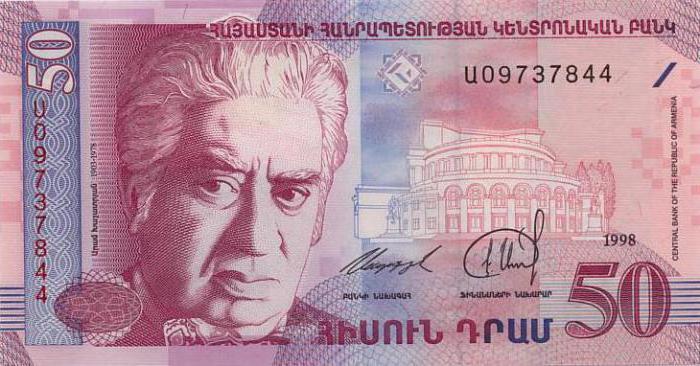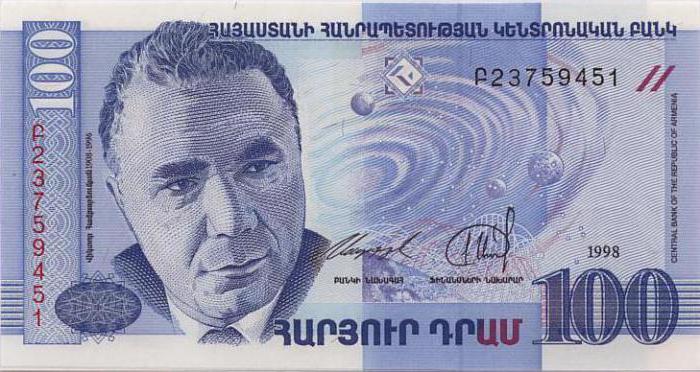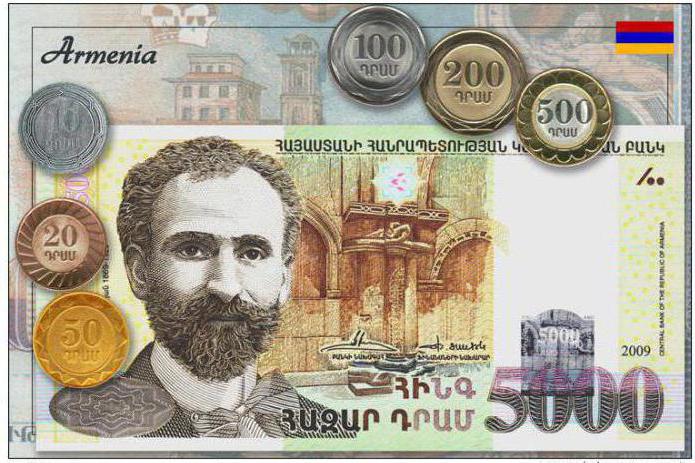Each country has its own national currency. What is the name of Armenian money? They are indicated by the word "drum." One unit is equal to one hundred lum. But due to low purchasing power, coins are hardly ever used today.
origin of name
Money in Armenian is called "dram." This word is taken from the Greek language. "Drum" in translation - money. Silver coins were minted from 1199 to 1375. At first, Armenia wanted to give another name to the money - “nut”. Then the options became more diverse. It was proposed to name the bills “Dahak”, “Ibar” or “stack”, and the coins - “them”, “Luma”, “Plick”, etc. But still, the name “drum” was chosen for the national currency.
The history of the emergence of the Armenian national currency
The first Armenian money appeared in the 1st century. BC e. The ruler, Tigran the Second Great, was depicted on the coin. On the king’s crown there was a star with a tail. During the period when Tigran the Third came to power, new coins appeared on which one could see engraving with the image of the conquests of Armenia.
With national letters, the currency appeared in the Cilician state. Levon the First was engraved on coins. In the fourteenth century, the Mamluks took possession of Armenia, and the concept of Armenian money disappeared for five centuries. They returned to circulation only in 1918-1920. Money was printed in London; artist A. Fetvadzhan was engaged in their design.
Despite the presence of the national currency, until 1993, Russian rubles were in use in Armenia. Then the republic founded its own Central Bank. The Armenian dram appeared in circulation on November 21, 1993. The national currency has replaced the Russian one.
Banknote Description
Modern paper Armenian money has an interesting design and execution. The obverse depicts famous cultural and political figures and sights dating back to different periods in the history of the country. The denomination is indicated in the upper corners and below, in the center. The reverse depicts architectural monuments, panoramas and historical scenes.
Previously, banknotes were printed in the Russian Federation, in the mint of St. Petersburg. The modern currency is made in Yerevan. It built its own mint. Now in Armenia banknotes are used in denominations:
- 1000 drams are painted in green and pink. The size of banknotes is 136 * 72 mm. The banknote depicts a horse with a cart at an old Yerevan building and writer E. Charents near Mount Ararat.
- 5000 drams are painted in green and brown. The size of notes is 143 * 72 mm. They depict the writer O. Tumanyan and the landscape of the artist M. Saryan.
- 10,000 drams painted purple. The size of notes is 150 * 72 mm. The banknotes depict a view of Gyumri and the writer A. Isahakyan.
- 20,000 drams are painted in orange, brown and yellow. The size of banknotes is 155 * 72 mm. The banknotes depict the artist M. Saryan and a fragment of his painting “Armenia”.
- 50,000 drams are painted in gray and brown. The size of notes is 160 * 79 mm. They depict King Trdat the Great and St. Gregory at Mount Ararat, as well as the Etchmiadzin Cathedral.
- 100,000 drams are painted in blue and brown. The size of banknotes is 160 * 72 mm. The banknotes depict the apostle Thaddeus, who passes the canvas to Abgar the Fifth, and the ruler himself.

Banknotes of 50, 100 and 500 drams were previously issued, but they were withdrawn from circulation. The Armenian currency currently has seventeen levels of protection (spirals, watermarks, etc.). But it is constantly being improved and supplemented by new elements of protection.
Coin Description
Armenian money in the form of coins is minted in a radially round shape. They have a simple design.On the obverse is the denomination in the ornamental pattern. On the reverse - the state emblem of the country (in the middle). Nearby is the name of the republic in Armenian, and on the rim is the year of issue of the coin. They differ in denominations and manufacturing material (dram):
- 10 - from aluminum;
- 20 - from steel with a copper coating;
- 50 - from the same material, but coated with brass;
- 100 - from steel with nickel;
- 200 - from brass.
A coin of denomination of 500 drams is made by the bimetallic method. This denomination has a brass core and a copper-nickel rim. Coins, like banknotes, are minted at the Yerevan Mint.
Anniversary and collection money
In addition to ordinary Armenian money, commemorative and collection coins are made for major holidays. The face value of 1000 drams was minted from silver and gold in three different versions. The coins depict G. Narekatsi, the vine and the Armenian alphabet. The face value of 10,000 drams is made of gold. The building of the Opera and the portrait of A. Khachaturian are depicted on the coin. The face value of 5000 drams has two options - one was dedicated to the 15th anniversary of the national Armenian currency, the second to the topic of the diaspora.
Armenian currency rate
The exchange rate of money changes annually. For example, in 2012, the Armenian currency against the ruble was 12.84: 1, against the dollar - 407.4: 1, against the euro - 519.2: 1. In 2017, these values changed slightly. The exchange rate of Armenian money against the ruble was gradually decreasing and now it is approximately in the ratio of 11.51: 1, against the dollar - 482.50: 1, against the euro - 541, 41: 1.
You can exchange rubles, dollars and euros for local currency at any bank in Armenia. The country has branches of two Russian banks: VTB and Sberbank.